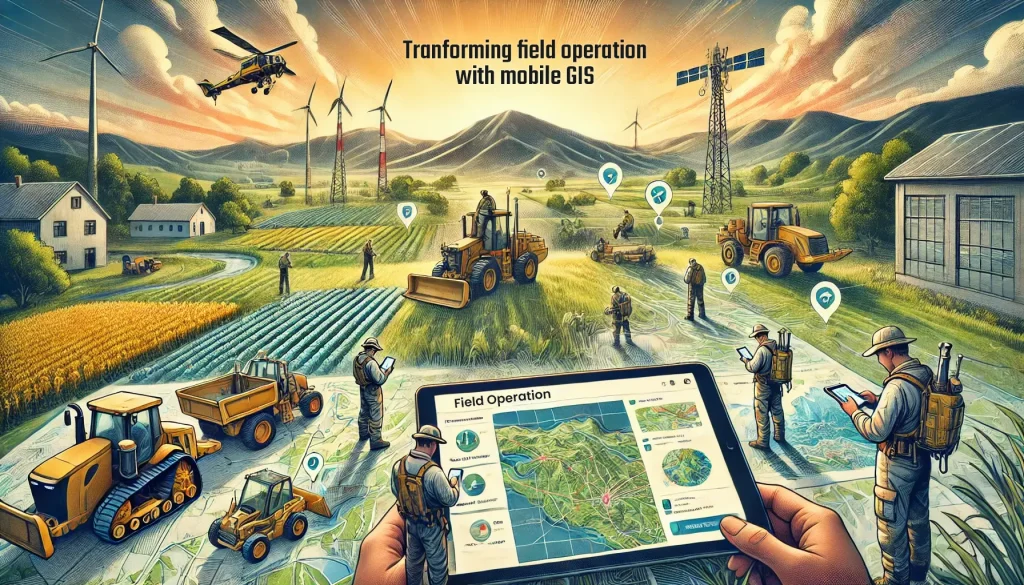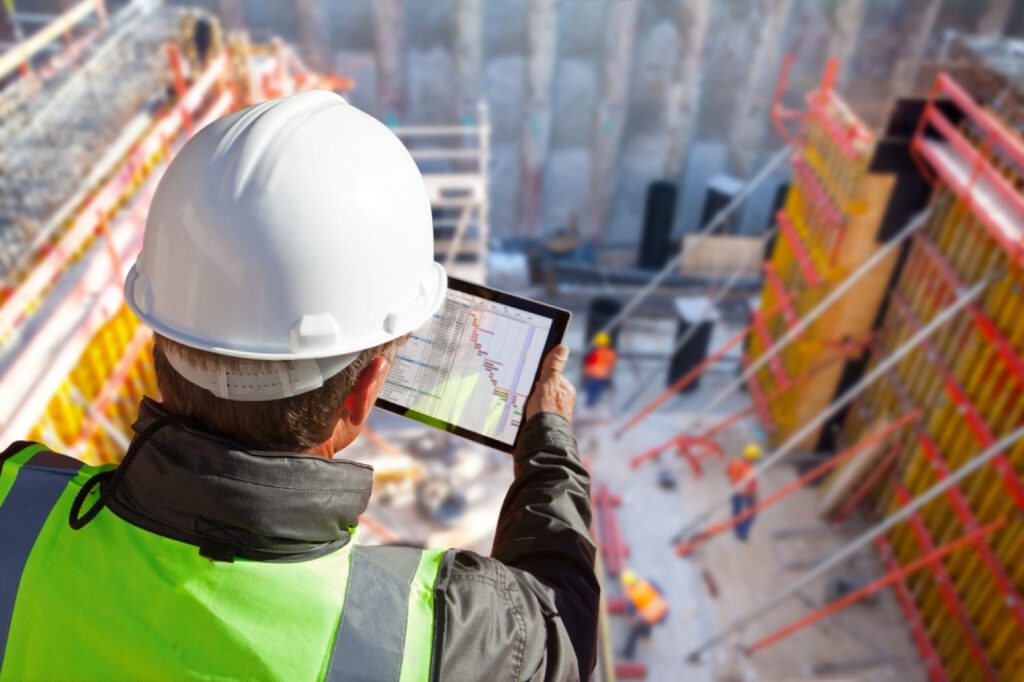- Jul 29, 2024
Transforming Field Operations with Mobile GIS

Be it in utilities, transportation, or environmental management, field operations are complex and challenging. Mobile Geographic Information Systems (GIS) is a game-changer for field crews allowing them to tap into real-time location-based data and insights revolutionizing field operations.
Let’s explore how mobile GIS is transforming field operations and how to use it effectively to drive the productivity of your field crew.
Key benefits of Mobile GIS in field operations
The ability to collect, analyze, and visualize data in real-time is crucial for efficient decision-making in field operations. Mobile GIS empowers field service crews to make informed decisions, employee safety, improve efficiency, and enhance customer satisfaction.
What is Mobile GIS?
Mobile GIS integrates geographic information with mobile devices such as smartphones, tablets, and rugged field computers allowing field personnel to access spatial data, maps, and applications on the move.
Here are 7 ways in which Mobile GIS transforms field operations:
- Enhanced Situational Awareness
Mobile GIS provides field technicians the ability to gain a clear understanding of their surroundings in real time. With access to up-to-date maps, geocoded imageries and data, crews can quickly assess their surroundings, job requirements, and potential challenges. Mobile GIS integrated with field operations software also helps technicians optimize their routes and prioritize tasks. and respond effectively to changing conditions. For example, utility workers can pinpoint the exact location of underground cables or pipelines, reducing the risk of accidental damage. Similarly, emergency responders can visualize the extent of a disaster and allocate resources accordingly. - Improved work order management
Mobile GIS streamlines work order management by providing field crews with all necessary information at their fingertips. Work orders can be assigned digitally with field operations software, including detailed instructions, maps, and relevant location-based data. Technicians can access and update work order information in real time, ensuring that everyone is on the same page. Additionally, the ability to capture photos, signatures, and record observations directly in the field streamlines the work order closure process. Real-time field data collection eliminates the need for manual paperwork and ensures that all information is accurate and up-to-date. - Better asset management
Mobile GIS simplifies the management and maintenance of infrastructure assets (such as water pipelines, fiber networks, or sewer systems). With GIS mobile apps, field technicians can accurately locate and identify assets, facilitating efficient maintenance and repair operations. By combining asset data with geographic information, location-based mobile apps can gain valuable insights into asset performance and utilization. GIS mobile apps can transform field activities like.
- Asset inspections: The field crew can conduct inspections, record maintenance activities, and update asset attributes directly in the field.
- Work order tracking: Technicians can receive work orders on their mobile devices, complete tasks, and mark them as done.
- Monitor asset condition: Assess and update asset condition using photos, videos, and field notes.
- Dynamic mapping and visualization
By using advanced visualization tools and real-time GIS, field teams can view interactive maps on their mobile devices, overlaying data layers such as customer locations, asset information, traffic conditions, land parcels, or environmental features. These maps provide context and help field personnel make informed decisions. This can be valuable in situations like
- Emergency response: During a natural disaster, emergency responders can quickly identify affected areas, evacuation routes, and critical facilities using real-time maps. Specific command control-based GIS mobile apps are highly useful to evacuate the people during high range of floods and meet the medical emergency.
- Infrastructure maintenance: Utility crews can locate underground pipes, power lines, and valves, minimizing downtime during repairs with location-based mobile apps. Deploying field crew in utility electrical and smart street light management can be done effectively with open-source GIS based mobile applications.
- Increased efficiency and productivity
Mobile GIS allows organizations to use location-based data to increase the efficiency of field operations by optimizing resource allocation, faster incident management, timely risk mitigation, and boosting productivity
- Optimized scheduling and resource allocation – By leveraging real-time data, organizations can optimize route planning, considering factors such as traffic conditions, technician availability, and customer preferences. This leads to reduced travel time, increased productivity, and improved customer satisfaction.
- Efficient routing and navigation – Mobile GIS applications offer route optimization based on real-time traffic, road closures, and other factors. Field crews can optimize their routes, reduce travel time, save time and fuel by navigating to their destinations efficiently, and maximize productivity.
- Real-time field data collection and verification
With the ability to capture GPS coordinates, photos, and other information directly on mobile devices, crews can create accurate and detailed records of their work in field data collection apps. By capturing data directly in the field, technicians can eliminate errors associated with manual data entry improve data quality and ensure data consistency.
This data can be used to update maps, create asset inventories, and identify trends over time. For example, environmental scientists can use mobile geospatial software to collect data on water quality, soil conditions, and wildlife habitats. Real-time monitoring of mineral commodities / food material can be done effectively with geo-enabled mobile applications, and it can be also used to ensure the safety of drivers.
- Enhanced collaboration and communication
Mobile GIS enables real-time collaboration between field crews and the office, sharing maps and data to enhance decision-making and efficiency, benefiting utility workers and emergency responders alike.
Mobile geospatial software fosters collaboration among field teams, office staff, and external stakeholders with
- Real-time updates: Field data syncs with central databases, ensuring everyone has access to the latest information
- Field-to-office communication: Field workers can report issues, request additional resources, or seek guidance from supervisors.
- Public engagement: Share project updates with the public through interactive maps or mobile apps.
- Real-time updates: Field data syncs with central databases, ensuring everyone has access to the latest information
Maximizing benefits of Mobile-GIS
Mobile GIS has evolved to be a game-changer for the modern field workforce by optimizing workflows, reducing costs, and increasing productivity. As organizations embrace digital transformation, integrating mobile GIS into field operations becomes essential.
The key to successful mobile GIS implementation lies in user training, data accuracy, and seamless integration with existing systems. So, choosing the right Mobile GIS solution that aligns with specific business requirements is crucial. An experienced GIS service provider like 12thwonder can help you seamlessly adopt Mobile GIS to optimize your field operations.
Ready to transform your field operations with Mobile-GIS? Talk to our experts.






